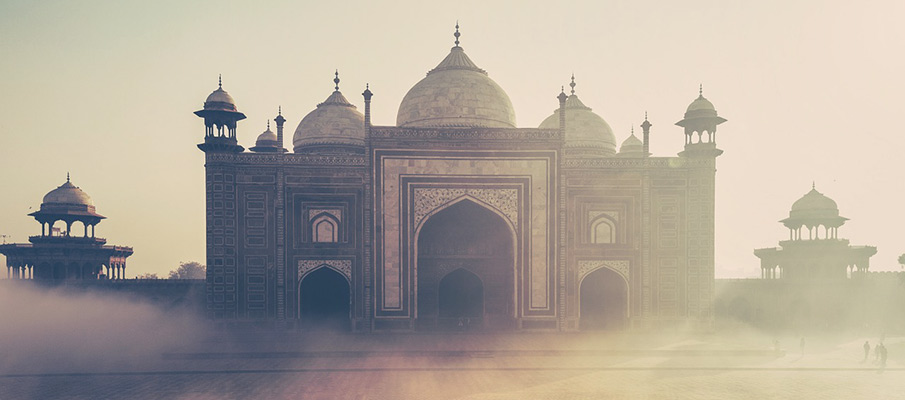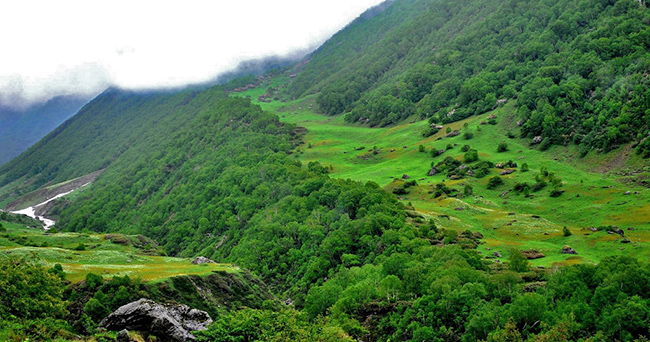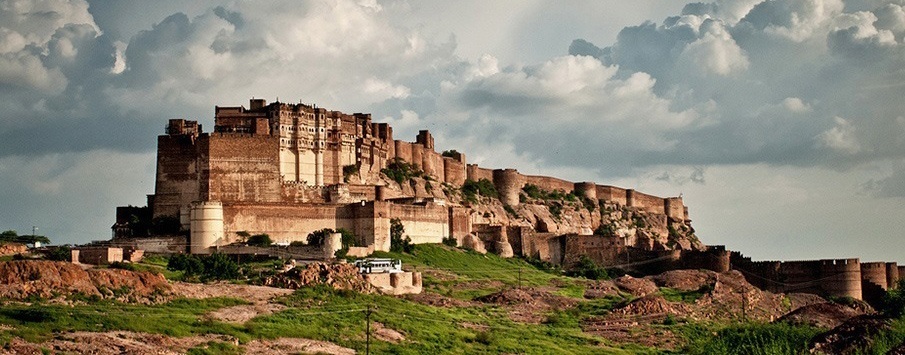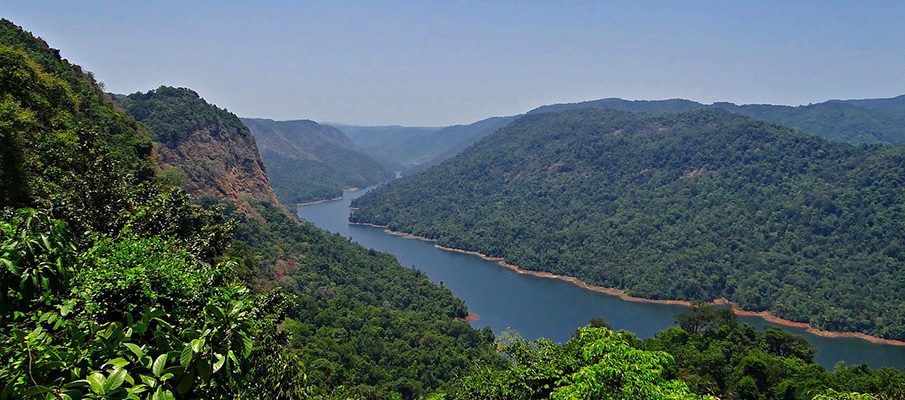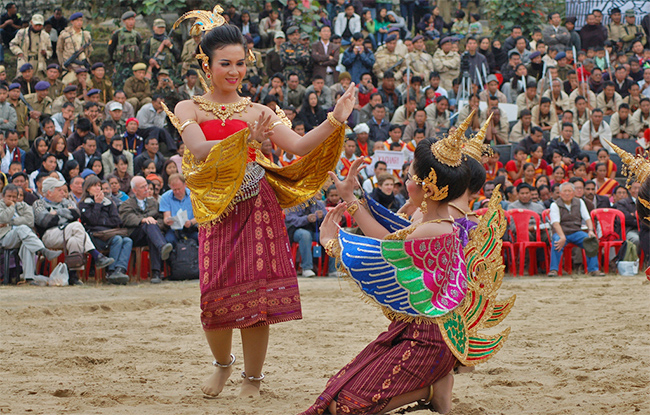India has so many incredible landmarks, that it’s difficult to pick the best ones. Tourists visiting India are always drawn to the star attractions like Taj Mahal and Humayun’s Tomb, but there is much, much more to see in India than those sites included in a typical itinerary. Whether you are a foreign tourist flying in or a native Indian looking to explore his own country, these 10 landmarks in India should be at the top of any traveler’s bucket list.
Contents
1) Konark Sun Temple
Konark Sun temple has been built in 13th century by King Narasimhadeva, and the name Konark is an amalgamation of two words Kona meaning corner and Arka meaning the Sun. It was excavated in 19th century and European sailors called it Black Pagoda. Legend says that Samba when cursed with leprosy was told that he would be relieved of the curse by worshipping the sun God and so when he went to Konark he found image of Surya seated on Lotus and later he installed this image in a temple built by him in Mitravana.
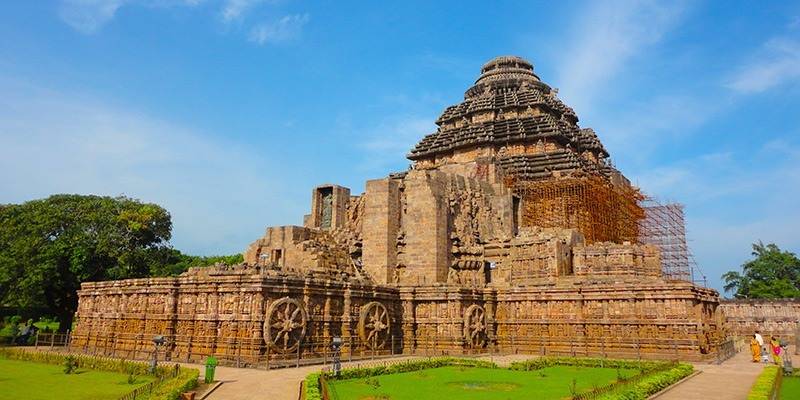
Konark Sun Temple is designed in the shape of a colossal chariot with seven horses and 24 wheels with a set of spokes and elaborate carvings, carrying the sun god, Surya. The inner sanctum or vimana used to be surmounted by a tower or shikara. The nata mandir has also been intricately carved. There are carvings of men, animals, warriors on horses and many other patterns on the walls and ceiling, and some carvings are in erotic style. There are three images of the Sun God, built in such way as to catch the rays of the sun at dawn, noon and sunset.
The Konark Sun temple is constructed in style of Kalingan school of Indian temple architecture and is aligned in East-West direction. Konark temple is not only known for its architectural grandeur but also for intricate sculpture work. It is 35 KMs from Puri city and bus, auto rickshaw or car can be hired to visit the temple.
2) Chittorgarh Fort
Chittorgarh Fort also called water fort covers an area of 700 acres and is situated at one end of 180-metre high hill. It is one of the splendid forts and a depiction of valour, history and culture of Rajput values. It was constructed during rule of Rana Kumbha who was king of Mewar at that time.
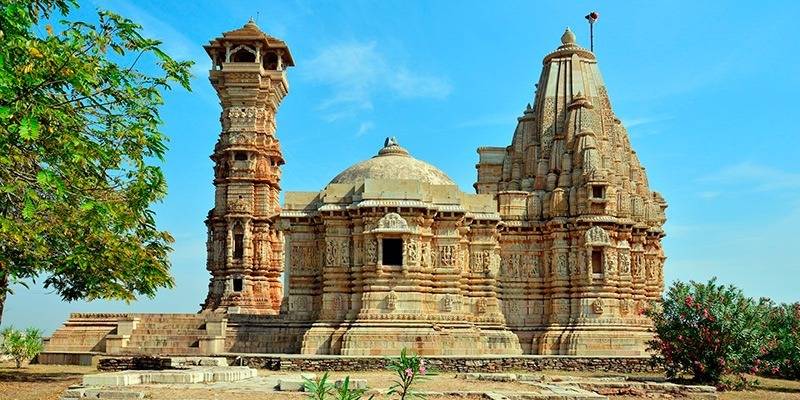
The Chittorgarh Fort can be approached through many gateways which are seven in number or ‘pols’, guarded by watch towers. Fort when built had 8 water bodies and only 22 remain till date with natural catchment including all kinds’ ponds, wells, and step-wells. There are two main stambhs or pillars – Vijay stambh and Kirti satmbh.
Vijay stambh was built it in 1440 to commemorate Rana’s victory over Mahmud Khilji. It is 9 storeyed structure with Hindu deity sculptures. Walking to balcony could be taxing especially with narrow steps but the top view of the town is worth an effort of 150 plus steps. The other one Kirti stambh is dedicated to 1st Jain Tirthankara Adinath and is seven storeyed with 22 metres height. Inside fort there are Meera and Khumba Shyam and Kali mata Temple. It is associated with Meera, a mystic poetess devoted to Lord Krishna. There is Gaumukh reservoir where fishes are fed and in underground cellars jauhar was said to be committed.
Fateh Prakash palace is built in modern style and has fountain and Ganesh idol both. One can takes bus or train from Jaipur since it is 300 KMs away, it takes 5 hours approximately.
3) India Gate, Delhi
The India Gate, is a war memorial located spanning the Rajpath has been designed by Sir Edwin Lutyens lies on the eastern edge of Kingsway as known earlier in New Delhi. This memorial has been dedicated to 82,000 soldiers who died in during First World War that happened between 1914–21 in countries like France, Mesopotamia, Persia, East Africa, and also during Third Anglo-Afghan War.
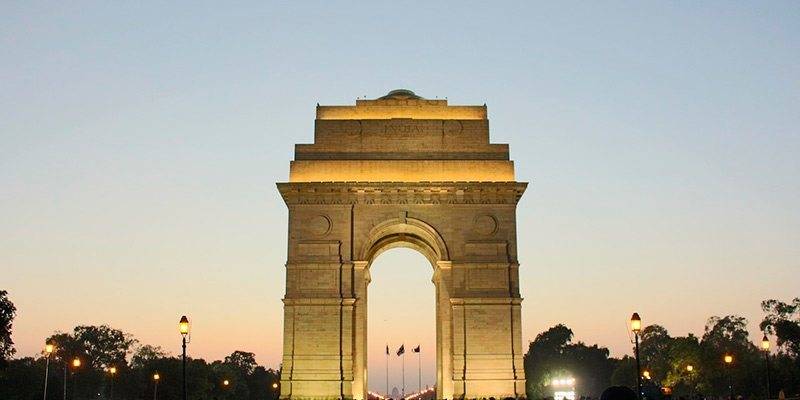
The architectural style of the arch resembles Arch of Constantine, outside the Colosseum in Rome, and also the Gateway of India in Mumbai. Name of many soldiers has been inscribed on the gate and there are soldiers constantly around the place.
Later structure, called Amar Jawan Jyoti, or the Flame of the Immortal Soldier was added near the place that consists of a black marble plinth, with reversed rifle, capped by war helmet, bounded by four eternal flames which is lighted by CNG flames all the time. When Indian soldiers were killed in the defense of their country in 1971 in the wake of Liberation of Bangladesh so to commemorate their sacrifice Amar Jawan Jyoti was built. Wreaths are placed at the place by the Prime Minister of India, and Chiefs of Armed Force on 26th January and on Infantry Day.
4) Hawa Mahal, Jaipur
Hawa Mahal as the name suggest s known as palace of breeze with beehive like structure and 953 small windows called jharokhas. The palace, which is five storey building has unique architecture is located to the south of the Jaipur city. It was built for women of the royal household so that they could observe street festivals being unnoticed from outside world.
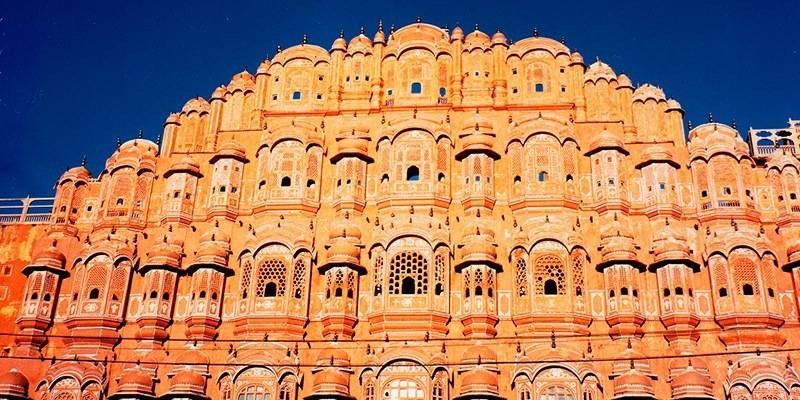
The Hawa Mahal has stone-carved screens, small casements and arched roofs and the imperial door opens into a large patio, with the Hawa Mahal enclosing it on the east side. The structure was built in 1799 by then King Sawai Pratap Singh and has been designed by Lal Chand Ustad and the jharokhas decorated with intricate latticework that allows cool air through the intricate pattern, chilling the whole area even during the high temperatures in summers.
There is museum which is also housed in the courtyard itself. The palace is built in red and pink coloured sand stone, keeping up with the pattern of the other monuments in the city. Jaipur has both bus and rail routes connecting it to rest of the parts and from Delhi it takes 5 hours to reach here.
5) Lotus Temple, Delhi
Lotus temple – going by the name resembles the shape of lotus flower and has won numerous architectural awards. It was completed in 1986 and is located in Delhi. It was built for people of Bahai faith. The Bahai laws believe that people of all faith and religions may worship God without denominational restrictions.
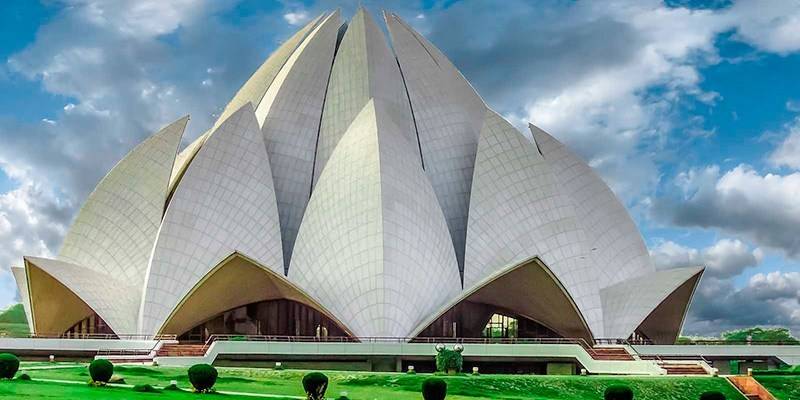
Abdul Baha the founder of the religion, stipulated that nine-sided circular shape should be an essential architectural character of a House of Worship. The surface of the House of Worship is made of white marble which has been brought from Greece. Lotus Temple property comprises 26 acres and has nine doors and surrounding ponds with beautiful garden and the insides can accommodate more than 2000 people.
People are allowed to sit inside without making any noise or sound which takes you to a spiritual level with calm and soothing vibes from the surrounding. Mr. Fariborz Sahba was Iranian architecture who had developed it and it attracts many tourists every year especially foreigners. Delhi being capital city is connected from almost all places in India vial railway and roadway both.
6) Mysore Palace
The City of Palaces which is Mysore has many palaces and one of the famous ones is Mysore Palace itself which faces Chamundi Hills since Maharajas of Mysore were devotees of Goddess Chamundi.
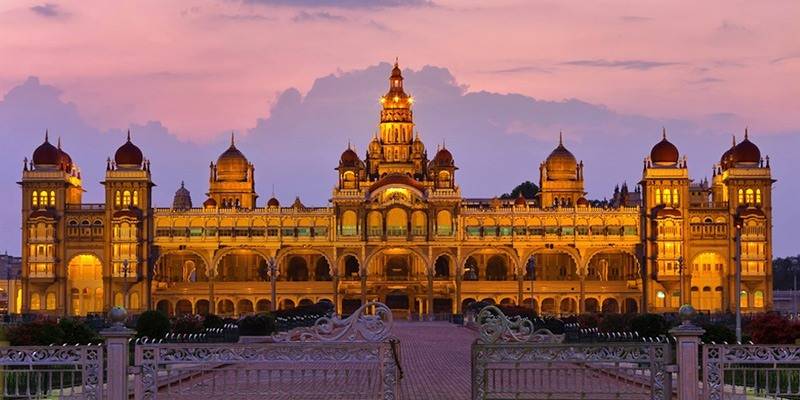
The main stone building has three-stone with 145 feet five storey arrangement and is made of grey granite with domes made form pink marble with several expansive arches with central arch having sculpture of Gajalakshmi who is considered the goddess of wealth and prosperity. There are three major special temple buildings within the Old Fort, and about 18 inside the palace heart building.
The whole Construction of palace which began in 1897 was completed by 1912, and continued beautification kept taking place and its inhabitants were slowly moved to the newer wings to build the palace in its current form today. This palace has three entrances from the East, south and west. East gate is the front gate and is usable by VIPs whereas South Entrance is for general public, and then last entrance is the west gate.
There are secrets tunnel as well leading to the palace. The palace is surrounded by a large garden and the entrance gate and arch holds the emblem of the kingdom of Mysore. Architectural style represents perfect diversity as it is Indo-Saracenic mixed with Hindu, Muslim, Rajput, and Gothic styles.
7) Qutub Minar
After climbing 379 steps one reaches the top of the masterpiece of Mughal architecture that is Qutub Minar which was started by Qutab-ud-din Aibak, the first Muslim ruler of Delhi, in 1200 AD, Iltutmush is said to have completed it in 1368, and Firoz Shah Tughlak added further fifth and the last storey.
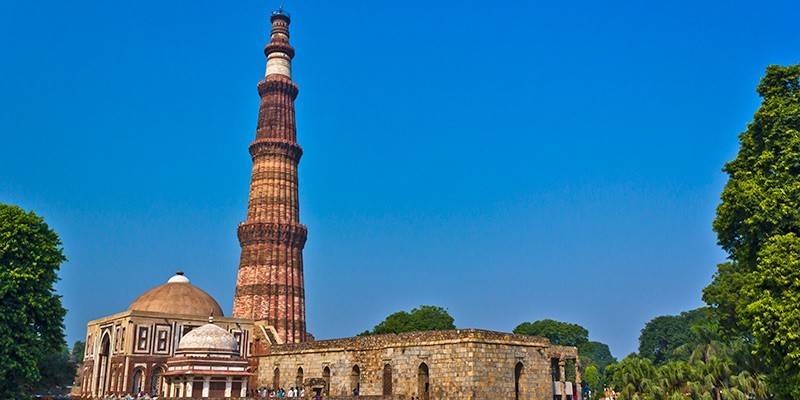
Alla-ud-din Khilji also made additions to the tower. Qutub Minar has been declared World Heritage Site and is surrounded by green garden,that serves as an ideal leisurely place for visitors. Five storeyed tower of Qutub Minar has unique designs with base measuring 14.32 meters and the top 2.75 meters. Verses from the holy Qur’an are engraved on sandstone walls of Qutub Minar and the monument serves the purpose of calling people for prayer to the nearby mosque.
The Minar provides bird eye’s view of Delhi city which is spectacular. Unfortunately, since few years the entry to the top of tower remains closed. The balconies on the upper floors project out that adds to the beauty of the Minar. Near Minar is an Iron Pillar which although built in that century has not rusted or decayed with time and is one of the metallurgical interests of the world.
Traditional story that floats with pillar is that wishes come true for those who can hold the pillar with their backs turned around.
8) Gateway of India
The Gateway of India was actually built to commemorate the 1911 royal visit of King George V, but it could not be completed until 1924. It is located on the waterfront in the Apollo Bunder area in South Mumbai facing Arabian Sea at end of Chhatrapati Shivaji Marg, Gateway of India is a monument that marks India’s chief ports near Mumbai and is a popular tourist attraction for visitors who arrive in Mumbai for the first time.
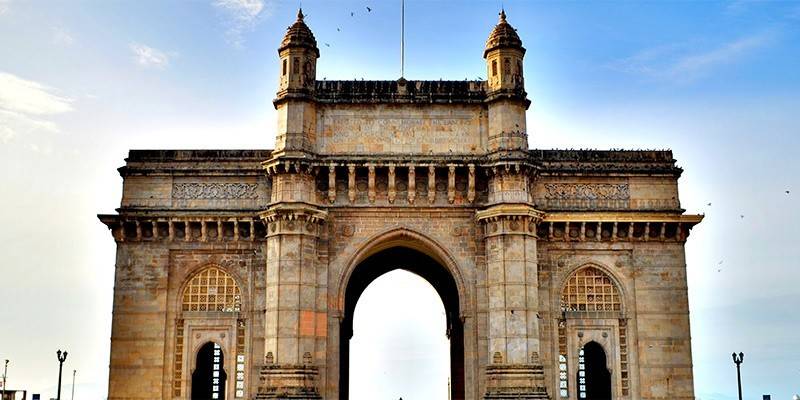
Though it represents the grandeur of the British Raj in India it is one of the beautiful gateways and on similar pattern India gate was also built in Delhi. With a height of 26m, the structural design constitutes of a large arch and has been made in the form of Indo-Gothic style with some traces of Muslim architectural styles incorporated together.
Mumbai visit is never complete without seeing Gateway of India and it is a favorite spot for tourists, so it also attracts vendors, food stalls and photographers. Gateway of India is the point where during British rule, the viceroys and governors used to land upon their arrival in India.
9) Golden Temple, Amritsar
Golden Temple located in Amritsar is one of the spectacular temples with design and pattern that reflects it’s grandiose and beauty. It is also called Harmandir Sahib which means ‘Temple of God’ and was designed by the fifth guru, Guru Arjun, who got cornerstone laid by the Muslim Sufi saint Sai Hazrat Mian Mir in 1588.
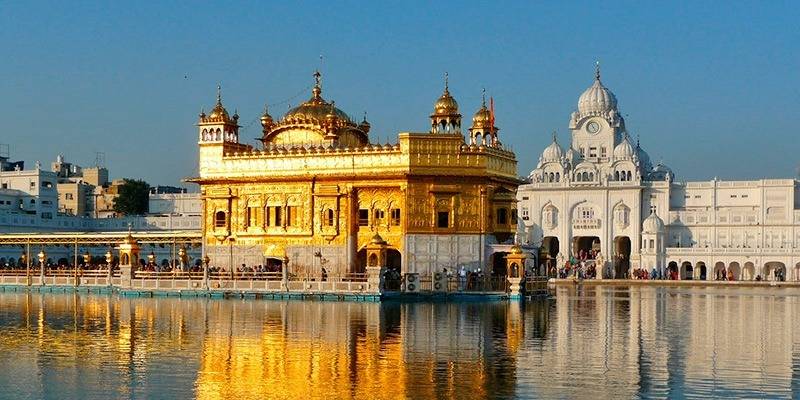
It is said that originally there was lake in the forest where the first guru of Sikhs, Guru Nanak used to preach and meditate and later his disciples continued to visit and later the lake was enlarged by Guru Ram das and the temple was built by Guru Arjun. The gold plating was done by Maharaja Ranjit Singh which gives it its distinctive appearance and current English name.
There are four doors to get into the Harmandir Sahib, which signify the openness of the Sikhs towards all other religions. The Sarovar, a large lake has fishes living in it and is fed by the Ravi River. The temple is a blend of Hindu and Islamic architectural styles. In the inner sanctum there is continuous chant from hymns of the Guru Granth Sahib adding to the intense and delicate atmosphere. There are shrines and monuments around the edge of the compound.
The Sikh Museum shows the persecution suffered by the Sikhs at the hands of Mughals, the British and Indira Gandhi. Next to temple complex there is dining hall where people are fed for free in ‘langars’.
10) Taj Mahal
Taj Mahal, situated in Agra is 350 years old building is truly one of the Seven Wonders of the World’s attracts millions of tourist every year including both domestic and foreigners. This monument was built by shah Jahan in memory of his third wife Arjumand Bano Begum, who was most beloved to her and he also gave her name Mumtaz Mahal meaning ‘jewel of the palace’.
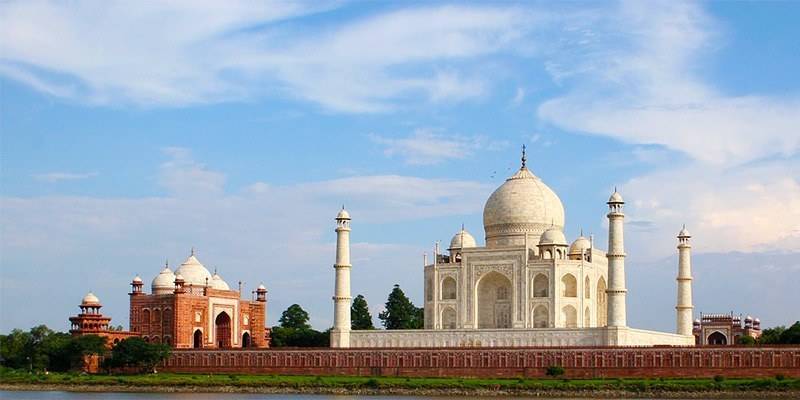
The tomb is one of the best specimens of Mughal architecture with white marble structure standing on a square platform symmetrical building and an arch-shaped doorway topped by a large dome. The pattern is blend of Persian style with decorative elements added by applying paint, stone carvings, calligraphy and motifs. The river yamuna flowing from one side gives it more picturesque view. Abstract forms of art are used throughout, especially in the plinth, minarets, gateway, mosque, and, and even on the surfaces of the tomb.
The garden surrounding the Taj Mahal is covered with lush green trees and fragrant flowers around the Taj Mahal adds to the beauty and the reflection of the monument can be seen. On the left of the Taj is red sandstone mosque where Prayer is offered and on the right side of the Taj is “naqqar khaana”or the rest house. The domes and vaults of buildings are worked in such a way that they form geometric patterns. It tool plinth and tomb took roughly 12 years to complete and rest of the part took an additional 10 years.
As the story goes on it is said that hands of all the workers were cut off so that they could never build any other monument like Taj Mahal. There are bus and train services both available to Agra. And one can easily find rickshaw and autos to go visit the site.
Last Updated on September 17, 2018 by Rohan

